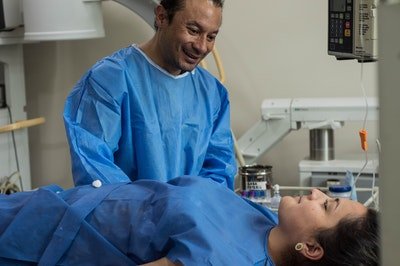
Do you know what an ultrasound is? Well, to put it simply, ultrasound uses sound waves to scan various parts of the body and project an image. It has high frequencies, in fact, it is higher than the upper audible limit of human hearing for about 20 kilohertz (20,000 hertz) in healthy young adults depending on the individual. Despite this, humans cannot hear it.
Ultrasound has various uses but is more generally being used for medicinal purposes. It can also be used for accelerating chemical processes, mixing, cleaning, detect invisible flaws, a means of communication and many more. Animals also use ultrasound. You can see it being used by bats and porpoises.
There are plenty of types of ultrasound. There is the ultrasound clinic Harley street where it scans and projects images of a person's breast tissue. There is the fetal echocardiography which uses ultrasound waves to assess the baby's heart anatomy and function. The 4D baby scans is the latest out of all the ultrasounds and project quality images. The advanced ultrasound is able to target a suspected problem. You can see 3D images of the developing fetus with a 3D ultrasound. The transvaginal scans are used inside the vagina to generate sonogram images. To measure slight changes in the frequency of the ultrasound waves, a doppler ultrasound is used. 2D images are projected by the traditional standard ultrasound. While men can opt with a urinary tract scan, groin and hernia scan, abdomen scan, thyroid scan, lumps & bumps scan, and a testicular scan. Aside from those mentioned, there is also the pelvic ultrasound imaging, the carotid, and abdominal aorta ultrasound imaging, musculoskeletal scans and many more.
The first-ever technological invention of an ultrasound scanner is credited to Paul Langevin. He developed it in 1917 to detect submarines. However, there was the adjustable whistle that produced an ultrasound invented by Francis Galton in 1893. Also, in 1880, a well-known French physicist used transducers to generate and detect ultrasonic waves in air and water.
Ultrasound scans are painless, safe, and reliable. Ultrasound is very useful since it helps doctors examine many of the body's internal organs including the pancreas, kidneys, bladder, uterus, ovaries, and unborn child (fetus) in pregnant patients, eyes, heart and blood vessels, including the abdominal aorta and its major branches, liver, gallbladder, spleen thyroid and parathyroid glands, scrotum (testicles), brain in infants, hips in infants and the spine in infants. With the help of the private breast ultrasound, the information that the doctor can gather about a patient's overall health is increased.
Follow the link below for more info: https://www.britannica.com/science/ultrasonics#ref527495.





